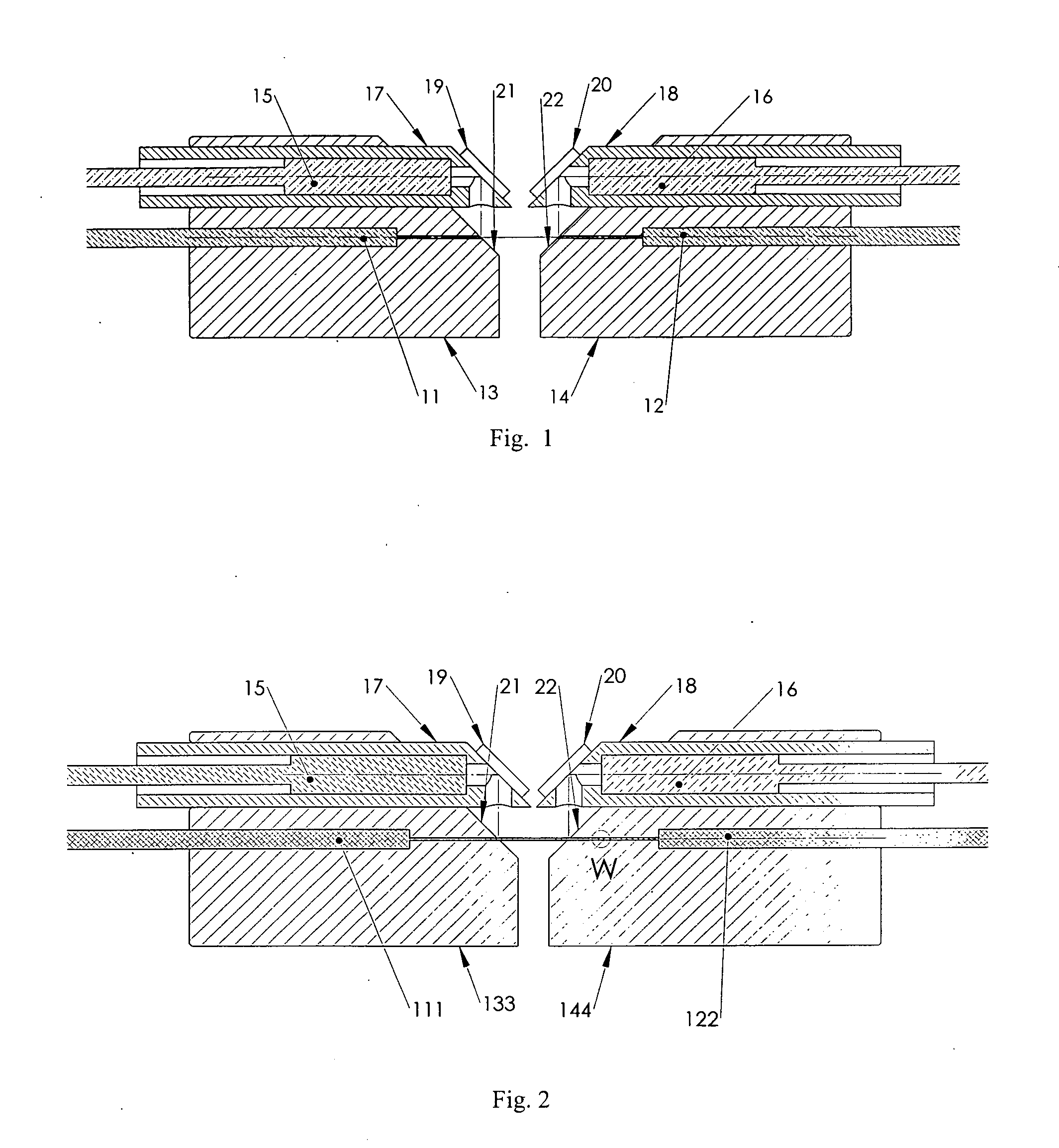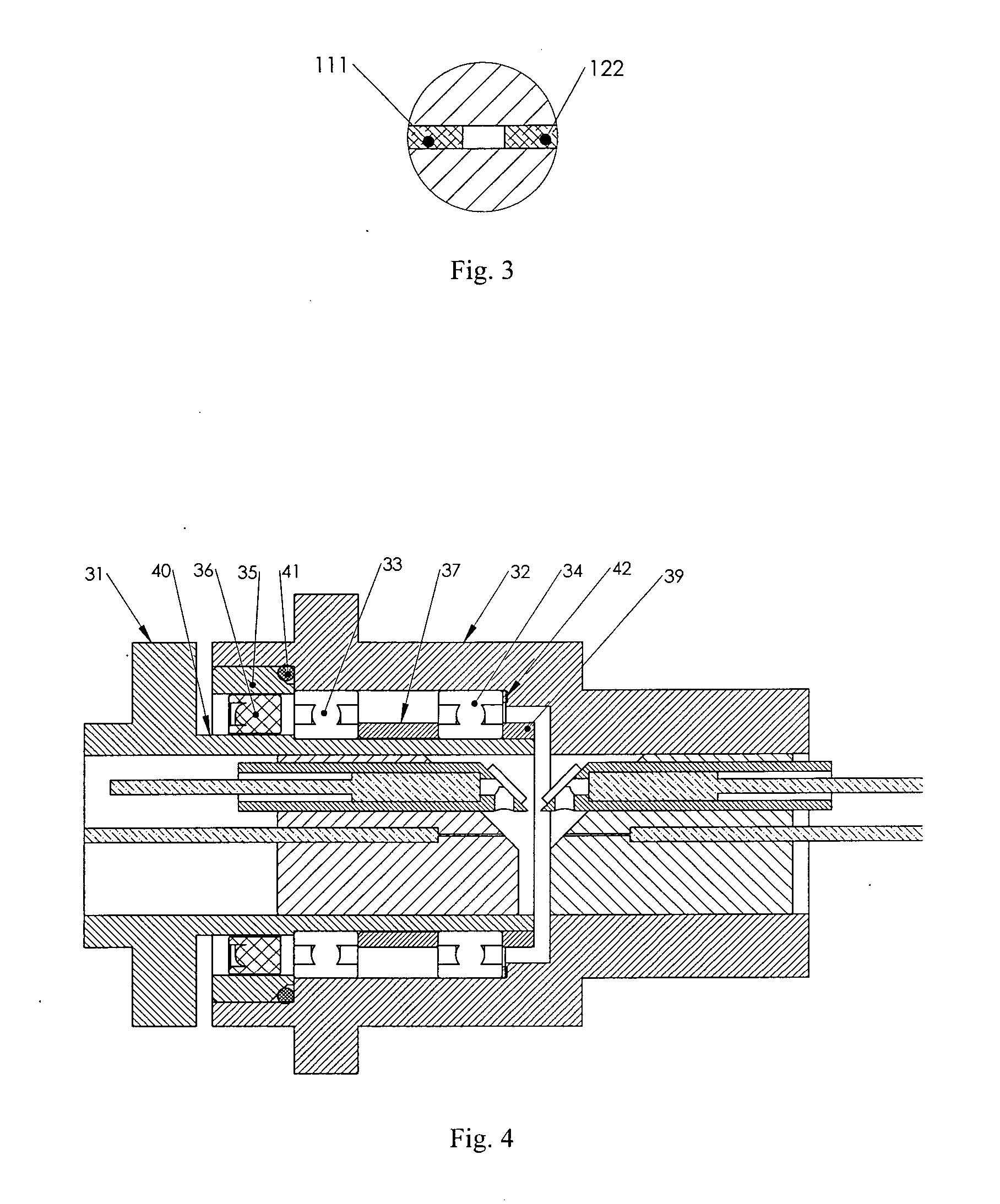Two-channel, dual-mode, fiber optic rotary joint
a fiber optic rotary joint and dual-mode technology, applied in the direction of optics, instruments, optical light guides, etc., can solve the problems of electrical power requirements, difficult fabrication of facing lens systems, and loss due to crosstalk and overlap of signal paths, so as to reduce insertion loss, reduce insertion loss, and increase return loss.
- Summary
- Abstract
- Description
- Claims
- Application Information
AI Technical Summary
Benefits of technology
Problems solved by technology
Method used
Image
Examples
Embodiment Construction
[0017]FIG. 1 illustrates a basic design of a two-channel fiber optical rotational interface. The holder 13 and 14 can be rotatable relative to each other. The axis of the rotation is the geometrical axis of the holder 13 and 14. The first channel of light pass consists of a micro-collimator 11 which is fixed on the axis of holder 13, and another micro-collimator 12 which is fixed on the axis of holder 14. The diameter of the micro-collimator is about 0.125 mm. Just like a single channel FORJ, the two micro-collimators are closely arranged opposite at their end section and the parallel ray of light emitted from one micro-collimator is easily transmitted to another micro-collimator through the rotational interface. The second channel of light pass includes conventional collimator 15 and 16, which are fitted inside of collimator housing 17 and 18 respectively, and reflecting surface 19 and 20. The collimator housing 17 and 18 are off -set on the holder 13 and 14 respectively, with thei...
PUM
 Login to View More
Login to View More Abstract
Description
Claims
Application Information
 Login to View More
Login to View More - R&D
- Intellectual Property
- Life Sciences
- Materials
- Tech Scout
- Unparalleled Data Quality
- Higher Quality Content
- 60% Fewer Hallucinations
Browse by: Latest US Patents, China's latest patents, Technical Efficacy Thesaurus, Application Domain, Technology Topic, Popular Technical Reports.
© 2025 PatSnap. All rights reserved.Legal|Privacy policy|Modern Slavery Act Transparency Statement|Sitemap|About US| Contact US: help@patsnap.com



